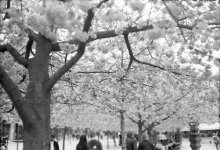Tveljus
Established
Howdy everyone!
I acquired this rare camera earlier today from a Swedish auction firm, and as the info on the camera is really scarce on the internet I thought I'd start this thread. :angel:
Firstly, I would like to invite all Marshal Press owners to add to the thread, whether correcting me or linking to pictures taken with the camera.
Secondly, I thought I'd start off by writing about how to use the camera in the most basic way, and later I'll add some photos mainly to display the optics quality on different apertures.
So, how to shoot with the camera:
I acquired this rare camera earlier today from a Swedish auction firm, and as the info on the camera is really scarce on the internet I thought I'd start this thread. :angel:
Firstly, I would like to invite all Marshal Press owners to add to the thread, whether correcting me or linking to pictures taken with the camera.
Secondly, I thought I'd start off by writing about how to use the camera in the most basic way, and later I'll add some photos mainly to display the optics quality on different apertures.
So, how to shoot with the camera:
- To load the camera, lift up the metal latch on the right side of the back; the back door will swing open. The empty spool is put on the LEFT side in the back, and the unexposed roll to the RIGHT. This is the reverse compared to most other cameras. The camera takes both 120- and 220-film – select correct format on top of the film-reeling dial (see moment 2).
- After closing the door and lowering the latch back again, you reel the film by turning the film-reeling dial on top and to the left on the camera back clockwise. On the lower edge of the dial you'll see an "S" when you've just loaded the camera, and as you turn the dial you'll get to the numbers 1-18, signalling what frame you are currently on.
- Composing and focusing is done via the viewfinder/rangefinder window. You focus with a horizontal wheel on the back of the camera, to the right. (You use your right thumb)
- Now it's time to set the exposure. Set shutter speed by turning the toothed metal ring around the lens. Set the aperture by moving the metal knob below the lens, which in turn moves the aperture ring.
- After setting exposure, cock the built-in leaf shutter by pulling the metal lever on top of the lens from right to left (as seen from above, camera facing in the same direction as you). This works the same way as most lenses on large format cameras.
- Now, make sure the ON/OFF-dial at the shutter trigger on top and to the right on the camera back is switched to ON. If it's switched to OFF, you can't trigger the shutter.
- Press down the shutter trigger, and SNAP! You've taken your photo! 🙂
- To use the film-reeling dial to reel the film to the next frame for exposure, you must first push the little lever (on the back of the camera in the top left corner) inwards and to the left – this is the double-exposure prevention lock. There's an etched white arrow above it indicating the correct direction. After this is done, you can reel the film to the next frame and continue shooting!
- As always, when you've shot your number of exposures, continue to reel the film until you are sure that the spool is completely rolled up. Open the back by following moment 1's instructions, and restart.







